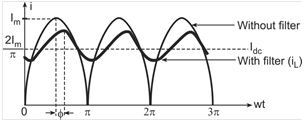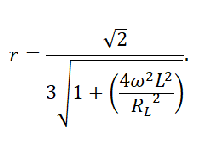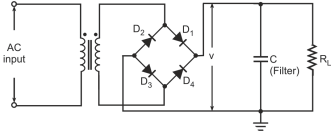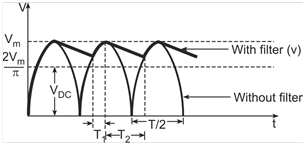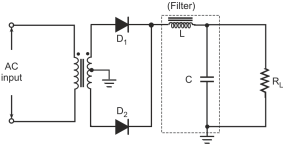The Fourier series expansion of a full-wave rectified voltage waveform is given by
Neglecting higher order terms beyond second harmonic, the above equation reduces t
The first term represents the DC component and the second term represents the AC component.
Since the AC component of current will lag behind the voltage by an angle (∅) given by tan–1(2wL/RL), the expression for resulting current can be written as
Ripple factor is the ratio of RMS value of the AC component to that of the DC component. Therefore, it is given by
For (4w2L2/RL2) much greater than 1, expression for ripple factor (r) reduces to
r equals RL/1333L for power line frequency of 50 Hz and RL/1600L for power line frequency of 60 Hz. (L is inductance in Henries and R is resistance in ohms).

